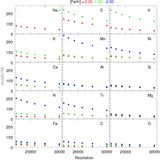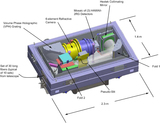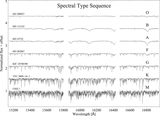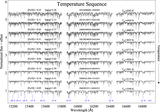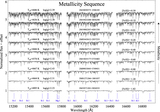Image Details
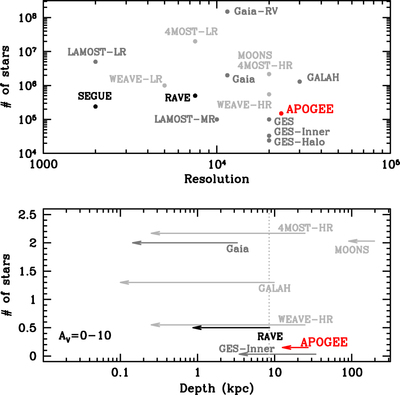
Caption: Figure 1.
APOGEE in the context of other Galactic archaeology surveys, past, present, and future. The top panel shows the number of Milky Way stars, observed or anticipated, as a function of survey resolution. For those surveys with at least a resolution of R = 10,000, the bottom panel shows the expected nominal depth of the survey for a star with ﹩{M}_{{\rm{V}}}=-1﹩ in the case of no extinction (right end of arrows) and in the case of ﹩{A}_{V}=10﹩ (left end of arrows). In both panels, already completed surveys are shown in black, ongoing surveys in dark gray, and planned surveys in light gray. For surveys with multiple resolution modes, data in the top panel are plotted separately for high resolution (HR), medium resolution (MR), and/or low resolution (LR). For the Gaia/ESO survey, data for the “Inner Galaxy” and “Halo” subsamples are shown separately as well. “Gaia-RV” includes Gaia HR spectra of enough S/N to deliver radial velocities, whereas “Gaia” indicates only those with S/N high enough for abundance work. For Gaia, we adopted ﹩{A}_{G}/{A}_{V}﹩ from Jordi et al. (2010), assuming ﹩{(V-{I}_{C})}_{0}\,=\,1.7;﹩ sample numbers were taken from http://www.cosmos.esa.int/web/gaia/science-performance.
Copyright and Terms & Conditions
© 2017. The American Astronomical Society. All rights reserved.



